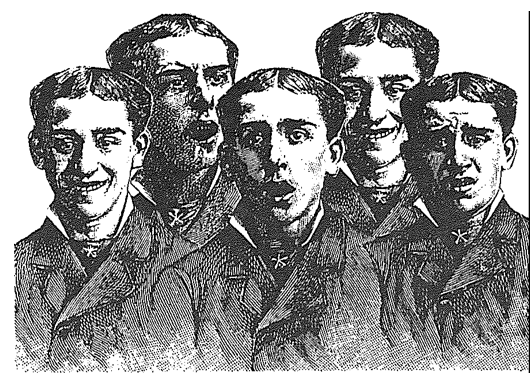George Perry: The Life of Python; Little, Brown; Boston.
Three-card monte is a game of chance that’s often dealt by those who leave absolutely nothing to chance. To play, the dealer takes three cards, shows their faces to the player, places them face down on the table, then shuffles their position. The player attempts to correctly identify the location of a particular card. A variation on this scheme is the old shell game, a true favorite of con artists. Once, Messrs. John Cleese, Michael Palin, Graham Chapman, Eric Idle, Terry Jones, and Terry Gilliam worked together in a BBC television program titled Monty Python’s Flying Circus(1969-1974) and feature films including And Now for Something Completely Different (1971), Monty Python and the Holy Grail (1974), Monty Python’s Life of Brian (1979), Monty Python Live at the Hollywood Bowl (1982), and Monty Python’s Meaning of Life (1983). One of their objectives in all of these projects was to expose con men, frauds, and various and sundry affected bigots and beings through the medium of humor, tasteful, tasteless, or otherwise. Those in the know refer to the group of men through a form of shorthand: the “Pythons.” But I’d like to suggest that as time has marched on (perhaps to the downbeat of John Philip Sousa’s Liberty Bell) they have become the “Montes.” The apotheosis of the Montes comes in George Perry’s The Life of Python which, in addition to being a heavily illustrated panegryic, is a semiauthorized biography (“Although it is by no means official, authorized Python work,” Perry notes, “each member went out of his way to be helpful.” He then expresses his deep gratitude to them for providing time and heretofore unpublished personal memorabilia). The book is precisely the sort of thing that the Pythons would be apt to parody; it is a text that one would expect to find in 16 or other teeny-bopper fanzines: details about the boys’ Mums and Pops, personal interest and hobbies, where they live. All that’s lacking is a checklist with items listing favorite foods, colors, and pop groups–though this last item is implicitly answered.
In The Meaning of Life there is a sketch including one “Mr. Creosote,” an extraordinarily fat man who copiously vomits while supping in a rather regal dining establishment and who finally explodes, showering the scene with his waste. One passage in the book, from Monte financial and spiritual supporter and ex-Beatle, George Harrison (ever notice how George is always described as an “ex-Beatle” while Paul and Ringo, to varying degrees, are their own men and John is simply a martyr?), may have been the emetic used to provoke Mr. Creosote:
There are certain things in life which make life worth living, and one of those things is Python. Especially to someone like me. When you’ve gone through so much in life, and you’re supposed to decide what is real and what isn’t, you watch the television and you see all this madness going on, and everyone is being serious and accepting it, and you’re ready to bang your head on the wall in despair then someone says “And now for something completely different!” That saves the day.
Life must be trying for poor George; no wonder he was never accused of being “the smart Beatle.” Pity, too, all of those who will be taken by Perry’s game of six-man Monte at their local bookseller. (SM)

Leave a Reply